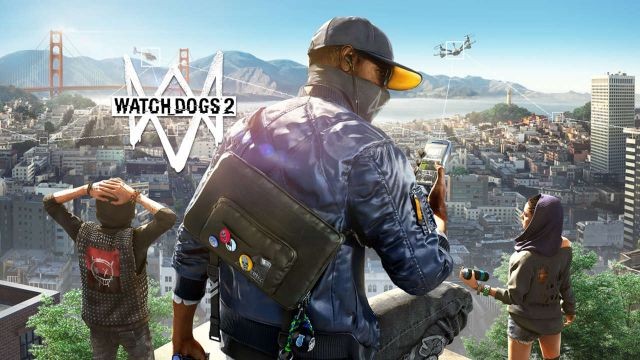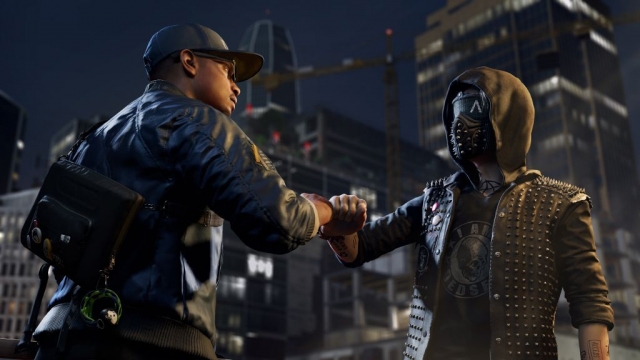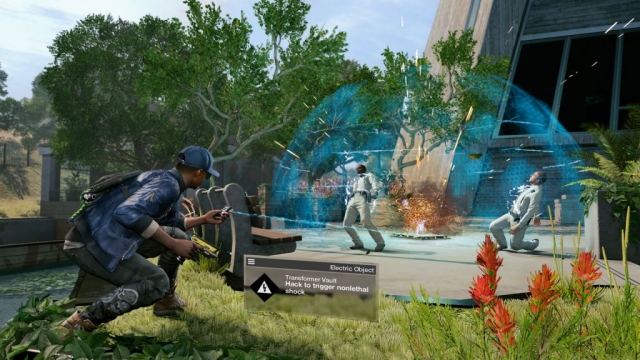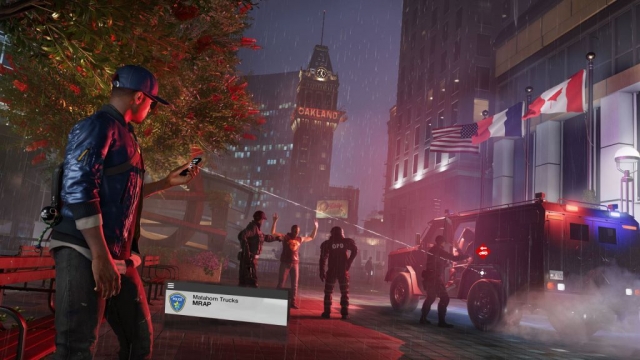Watch Dogs 2

Two steps forward, one step back.
The biggest problem with the original Watch Dogs was its protagonist, Aiden Pearce. The game seemed to think he was a compelling, somewhat tragic anti-hero, but he came off as a self-sabotaging, half-insane sociopath. There’s an essay to be written about Aiden as an accidental deconstruction of exactly the sort of video game hero he’s supposed to be.
The game around him was occasionally fun, but suffered badly from triple-A bloat syndrome. In an effort to make it as appealing to as many people as possible, it spread itself way too thin. There’s an interesting action game buried within it somewhere, but it clearly had too many cooks in the kitchen.
Watch Dogs 2 is a big improvement, but it’s just as flawed in different ways. It’s repetitive, occasionally inconsistent, and frustrating. At the same time, however, it’s a funny, often thoughtful game about information technology and its potential for abuse, with a likeable, grounded protagonist and supporting cast. My suspicion is that most of its development time was spent on its plot, character design, and building the city it’s set in, but the rest of it–the parts you actually play–was rushed to market.
In WD2, you play as Marcus Halloway, a young hacker who ends up with a criminal record due to the Blume corporation’s crime prediction software. Marcus hooks up with the hacktivist group DedSec, which played a small part in the original game, to clear his name. Having done so, Marcus and DedSec set out to dig up all the dirt they can on Blume. As it turns out, when everything is tied into the same central computer system, you can abuse the hell out of it, and soon, Marcus and DedSec end up unraveling a political conspiracy.
As in the first game, your primary weapon in WD2 is the city itself. You have access to multiple exploits that you can use against enemies, such as hacking camera networks, distracting people with text messages, disabling electronic locks to shut people in, or overloading junction boxes or gas pipes to take people out. Marcus can also use DedSec’s 3D printer to create a variety of firearms, but your primary and most useful tools besides hacking are a remote-controlled car and a personal flying drone. Even before you research any upgrades, the drone can scout ahead for you to find new paths, hack into unsecured systems, and be rigged up with explosives, while the RC car can pick up items for you or grant you access to closed-circuit terminals.
The bullet-points for WD2 would have you believe that these are features of a three-tiered system. As Marcus, you can undertake missions in three ways, which the game labels as Assault, Trickster, or Ghost; put another way, it’s a choice between shooting your way through a situation, using hacks or gadgets to incapacitate or avoid enemies, or simply sneaking past all opposition.
However, the game also makes it blatantly clear that any situation in which you’re forced to use Assault tactics is a failure condition, which it tries to dress up as if it’s a valid gameplay option. Marcus has very little health and no particular combat advantages, so any fight you get into that isn’t overwhelmingly stacked in your favor is a fight you’re likely to lose.
This is because the enemies in WD2 are all paranoid murderers on an adrenaline high. Regardless of who you’re facing, they all appear to be different skins on the same basic “enemy” template, so security guards at a movie studio have the same equipment and use the same tactics as the members of a street gang or police officers. The moment you’re spotted by any of them, they will instantly recognize you as a threat even if you’re surrounded by similarly dressed civilians; immediately escalate to lethal force, regardless of whether or not there are noncombatants in the way; and their reinforcements will show up almost instantly, with a good idea of where you are and invariably in a position to flank you. Since they’re all basically the same unit, this occasionally leads to situations where the security personnel at a movie studio are bombarding your position with thrown grenades, or a group of police attempt to execute you in broad daylight because you walked into the wrong parking lot. There’s no such thing in WD2 as a proportionate response.
It feels like the combat in general was a holdover from an earlier version of the game, but they were forced to polish it up and go with it to meet a deadline. That comes hand in hand with a few other issues, such as a lack of variety in missions; you’re pretty much always trying to figure out how to get onto distant rooftops or to closed-circuit terminals. I had a lot more fun with the game once I was able to research some of the more advanced exploits, such as electroshock grenades or being able to phone in a fake APB on a specific target, but in general, I spent a lot of time in this game trying to do everything I could to avoid having to engage in its combat. When there’s a full third of the game that I’m trying not to engage with, that’s generally a sign that something has gone terribly wrong.
What saves it for me, to some extent, is the writing. Marcus and his supporting cast are all sympathetic and likable, with understandable motivations, genuine points, and an awareness that they’re using the tools of their targets; many side missions involve you invading someone’s privacy in order to solve a problem for them. It’s hard not to root for DedSec, because even at low points in the story, there’s a sense of self-awareness and even self-parody that’s hard not to appreciate. In a stand-alone game, it’d be noteworthy; as a sequel to the overblown darkness of the original Watch Dogs, it feels almost revolutionary. It’s amazing how much better a game feels when you can stand to look at and listen to the protagonist.
Much as with Aiden, there’s probably an essay to be written here about WD2’s soft pressure towards non-violence. Marcus has a justified grudge against the system, because it got him arrested for a crime he didn’t commit, but the earliest missions give him a dorky sense of humor and an interest in stupid movies. You can dress him up in a variety of goofy outfits and there’s an achievement for petting dogs. It’d be downright bizarre if Marcus was also a multiple murderer, and so to avoid that dissonance, I found myself gravitating towards a non-lethal approach. This might have been a skeleton on which to hang a karma system like the first game had–where Marcus might become angrier and more cynical as your reputation decreases, and maybe DedSec’s tactics become more destructive as well–but I like this more freeform approach better than I would any kind of reputation-based progress bar.
Overall, I’m a lot more positive on Watch Dogs 2 than I expected to be. It doesn’t feel like it’s entirely finished (the multiplayer’s still pretty broken, for one thing), but it’s a huge step forward compared to the first game. I’d be interested in a theoretical WD3 that continued the same trends, further de-emphasizing the lousy combat in favor of more investigations, pranks, and exploits. I can’t give it an unqualified recommendation, but I went in expecting to hate it like rats, and instead, it’s a pleasant surprise.
Reviewed By: Thomas Wilde
Publisher: Ubisoft
Rating: 75%
——————————————————————————–
This review is based on a digital copy of Watch Dogs 2 for the PlayStation 4 provided by Ubisoft.
 Game Over Online
Game Over Online
















